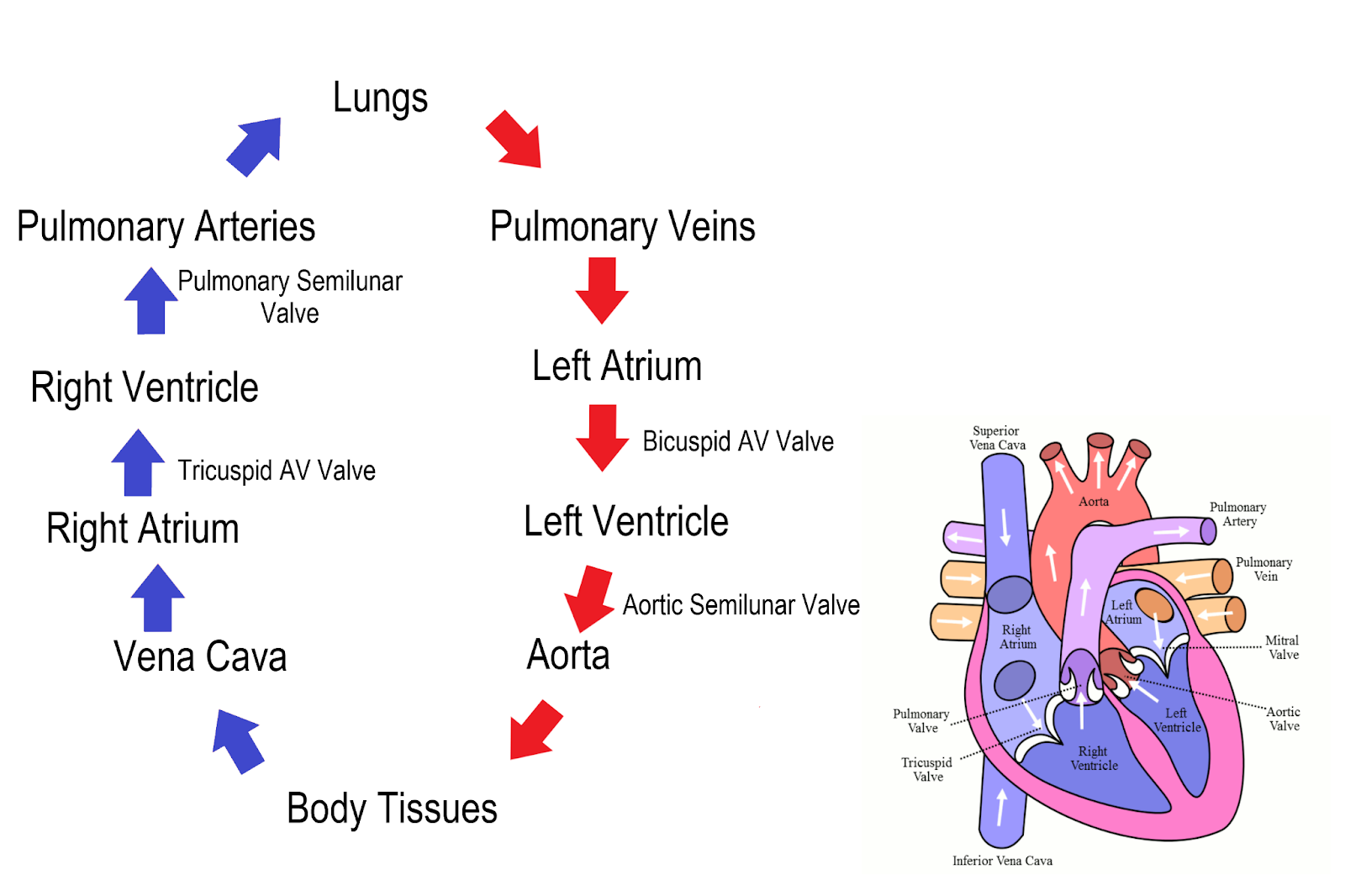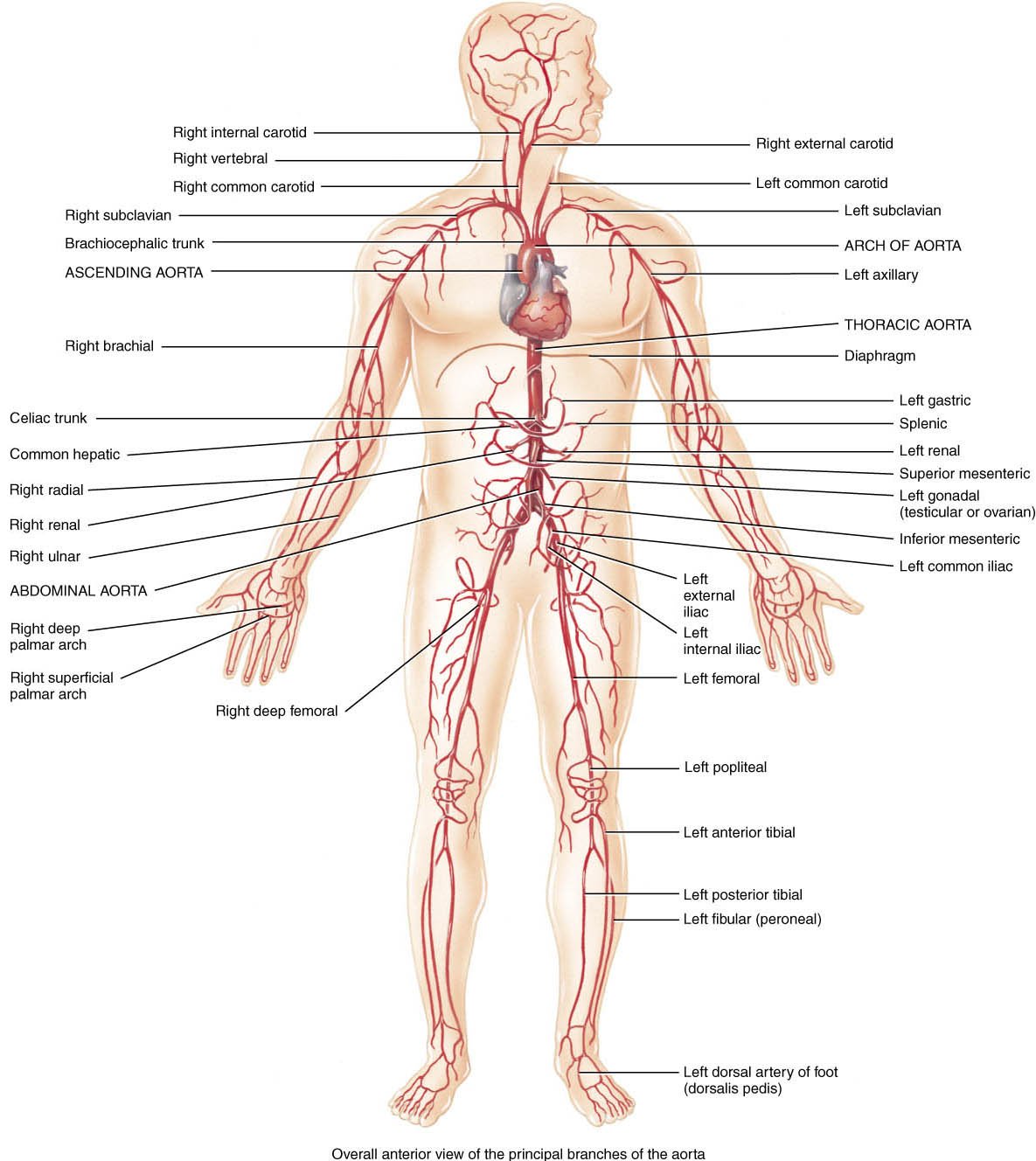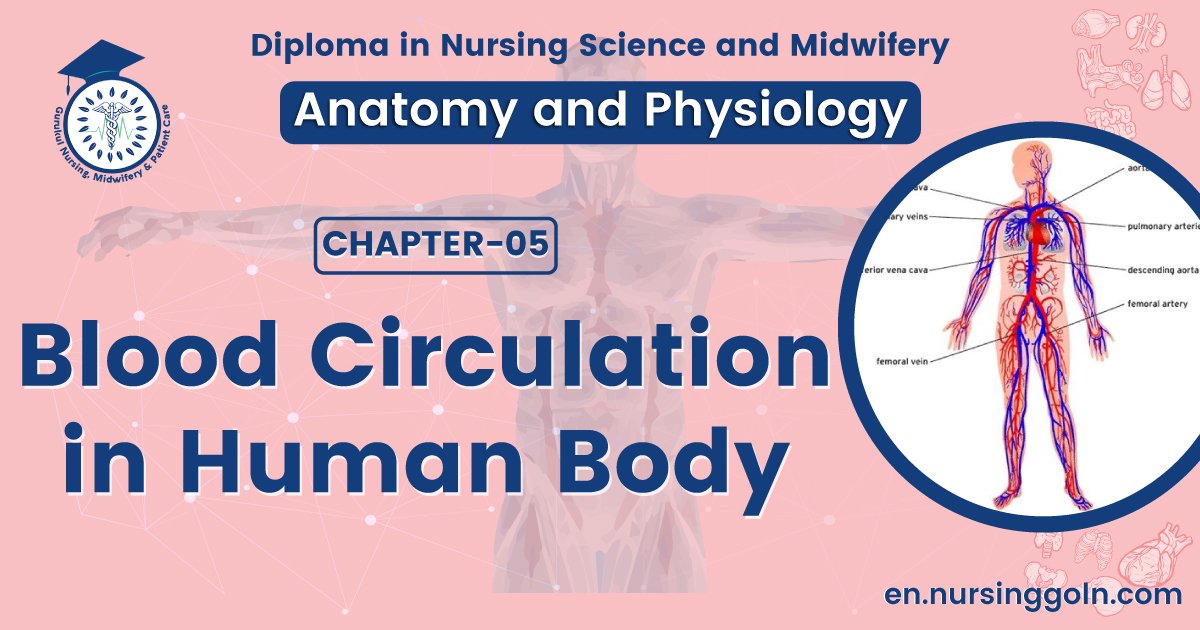Blood circulation in human body-The course is designed for the basic understanding of anatomical structures and physiological functions of human body, musculoskeletal system, digestive system, respiratory system; cardiovascular system; urinary system, endocrine system, reproductive system, nervous system, hematologic system, sensory organs, integumentary system, and immune system.The aim of the course is to acquire knowledge and skills regarding anatomy and physiology.

Blood circulation in human body
Complete Pathway of Blood Through the Heart and Lungs
Right atrium→tricuspid valve→right ventricle→pulmonary semilunar valve→ pulmonary arteries→ lungs→ pulmonary veins→ left atrium→bicuspid valve→left ventricle → aortic semilunar valve→aorta→ systemur circulation →vena cava→ repeat
Pulmonary and Systemic Circulations
Blood whose oxygen content has become partially depleted and whose carbon dioxide content has increased as a result of tissue metabolism retums to the right atrium. This blood then enters the right ventricle, which pumps it into the pulmonary trunk and pulmonary artenes.
The pulmonaryarteries branch to transport blood to the lungs, where gas exchange occurs between the lung capillaries and the air sacs (alveoli) of the lungs. Oxygen diffuses from the air to the capillary blood, while carbon dioxide diffuses in the opposite direction.
The blood that returns to the left atrium by way of 02 pairs of thepulmonary seins is therefore enriched in oxygen and partiallydepleted of carbon dioxide. The path of blood from the heart(right ventricle), through the lings, and back to the heart (leftatrium) completes one circuit: the pulmonary circulation.

Summary: Right atrium ⇒Right ventricles ⇒ Pulmonary arteries ⇒ Lungs ⇒Pulmonary veins ⇒Left atrium
Oxygen-nch blood in the left atrium enters the leftventricle through the mitral valve and is pumped into a very large, elastic artery the aorta. The aorta ascends for a short distance, makes aU-turn, and then descends through the thoracic (chest) andabdominal cavities.
Arterial branches from the aorta supplyoxygen-rich blood to all of the organ systems( Aorta, smaller arteries, arterioles and capillaries of tissues) Then the blood leaving from the tissues (Deoxygenated blood) bod) and return through the systemicveins (capillaries of venous part ⇒venules ⇒veins ⇒Inferior & Superior vana-cava) to the right atrium This is the part of the systemic circulation.
Summary: Left ventricle ⇒ Aorta ⇒ Arteriole ⇒ Capillaries (all systems) ⇒ Venules ⇒ Veins (Inferior & Superior vana-cava) ⇒ Right atrium
(Ref:-Stuart Ira Fox, Human Physiology-12th edition, P-)

Shortly :-
Pathway of blood circulation in human body (Summary)
Oxygenated blood from the lungs to the left atrium via the 2 pairs pulmonary vein
⇓
From the left atrium to the left ventricle thorough the mitral valve
⇓
From the left ventricle to the aorta through the aortic valve
⇓
From the aorta to the systemic arteries and the systemic tissues (ie, cerebral, coronary, renal, splanchnic, skeletal muscle, skinetc)
⇓
Deoxygenated blood from the tissue to the systemic veins and vena cava
⇓
From the vena cava (Inferior & Superior) to the right atrium
⇓
From the right atrium to the right ventricle through the tricuspid valve
⇓
From the right ventricle to the pulmonary artery
⇓
From the pulmonary artery to the lungs for oxygenation.
Read more:
